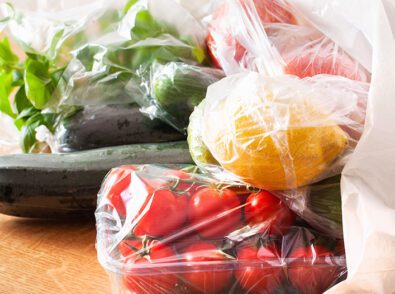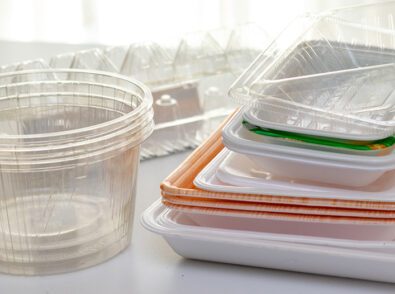
St. Petersburg, one of the larger cities in Tampa Bay, is surrounded by 244 miles of shoreline and welcomes thousands of tourists every year to enjoy its beautiful beaches and warm weather. Like many other cities in the area, St. Petersburg must actively manage plastic consumption and disposal to help keep plastics out of the […]


Daytona Beach is a popular tourist destination for students and families alike. It also hosts some of the largest motorsports events, including the Daytona 500. Daytona Beach welcomes thousands of tourists every year, and while managing residents’ waste, it also must deal with the influx of waste during peak visiting times. Learn more about Daytona […]


While Orlando is known for its entertainment attractions, including the famed Walt Disney World and Universal Studios, it is also home to over 100 lakes. Keeping single-use plastic out of Orlando’s water is challenging, as this city is Florida’s third-largest metropolitan area and one of the most popular tourist destinations in the world. Learn about […]


Buffalo is the second most populous city in New York State. It is a trade powerhouse surrounded by beautiful natural scenery, including Niagara Falls. Like many regions, the city struggles to keep plastic out of the land, rivers, and ocean. Learn more about the city’s plastic regulations. Key Takeaways Here are some key takeaways about […]



Jacksonville is a water wonderland. The city has the longest shoreline in the state, and the St. Johns River, the longest river in Florida, runs through it and flows into the Atlantic Ocean. Jacksonville also has the largest urban park system in the country. Like many other cities, Jacksonville struggles with plastic pollution. Learn more […]


Tampa is the third-largest city in Florida. It’s a major business center, and as part of the Tampa Bay Area, it also offers respite to thousands of tourists every year. Tampa Bay has wonderful nature and wildlife areas and is also home to Florida’s official marine mammal—the graceful manatee. Like many other cities, Tampa suffers […]


New York is the fourth most populous state in the United States and home to the most densely populated city in the country. The state borders the Great Lakes and the Atlantic Ocean and is home to beautiful and diverse wilderness. State leaders are taking pains to keep plastic from this populous state out of […]


New York City has been taking measures to prevent large volumes of plastic from ending up in landfills, incinerators, the Hudson River, and the NYC waterfront. Lawmakers first went after Styrofoam, and in 2020, the Big Apple implemented the New York City plastic bag ban, which has successfully reduced the use of plastic retail bags. […]



Straws are essential in the foodservice industry, whether you’re selling thick milkshakes, bubble tea, or specialty coffee with whipped cream. Plastic straws, however, are difficult to recycle and not biodegradable, posing a serious threat to the natural environment, wildlife, and humans. Those in the foodservice industry can significantly reduce their carbon footprint by choosing biodegradable […]


What Does Compostable Mean? Compostable products are products that can undergo aerobic biological decomposition. In other words, they decompose naturally over time in the presence of oxygen. This process can occur in a compost system where all the material breaks down into the basic parts—biomass, water, carbon dioxide (CO2), and inorganic compounds—which are all nutrients the […]


Of the nearly eight million tons of plastic waste, plastic straws make up about 4% of that total . They are also among the top 10 contributors to ocean marine debris. Plastic straws are not recyclable, partly because of their size but also because most are tossed into the trash and end up in a landfill.


With customer demand for eco-friendly options and regulatory scrutiny of traditional plastic foodware growing, more business owners are turning to sustainable practices—including transitioning to compostable and paper products. As restaurants seek sustainable alternatives to conventional plastic straws, both compostable and paper straws have emerged as leading options. This guide provides a transparent, data-driven life cycle […]


There is a wide range of compostable materials on the market that are eco-friendly alternatives to plastic. Restaurant owners who choose compostable containers for food and beverages benefit from their sustainability, reliability, and convenience. Each compostable material has advantages and drawbacks to consider when deciding which is right for your restaurant’s cutlery, straws, plates, drink […]



As sustainability becomes more important to businesses and consumers, more products are marketed as “eco-friendly” or “sustainable.” However, products that have these terms on their packaging don’t necessarily meet these qualifications. This practice is called greenwashing, and it poses a risk to restaurant owners seeking sustainable alternatives to single-use cutlery. Using these products can result […]


The sustainable products industry has an array of certifications, including BPI, TUV, and ASTM. We’ll review the most common composting certifications, so you know what to look for on the market. Difference Between Biodegrade and Compost Some certifications apply to composting, and others are for biodegrading. Both are natural processes for chemically breaking down materials […]


Today, over 83% of consumers believe companies have a responsibility to implement sustainable practices. As the foodservice industry evolves, many businesses seek better alternatives to traditional single-use plastics. Plastic straws remain a significant topic, with over 500 million pieces discarded in the United States daily. Restaurants, food chains, and hospitality establishments can lower their environmental […]


Greenprint provides high-quality, sustainable alternatives to single-use plastic cups, lids, and cutlery, building a circular economy for a positive environmental impact. Our products make it easy for restaurants to adopt sustainable packaging, regardless of location. We offer multiple cups that have a variety of disposal methods, including home composting, industrial composting, and landfill disposal. Our […]


Disposable cups are a convenient and cost-effective way to ensure you have enough drinkware for in-store guests and to-go customers. They’re portable, easy to use, space-saving, and budget-friendly. With the number of disposable cup types available, it can be challenging to choose the right one for your needs. Here we talk about different types of […]


Single-use plastic cups are popular for picnics, company kitchens, and events. They’re cheap, don’t require washing, and save time. However, these cups have significant negative impacts on the environment, like polluting the environment and releasing harmful chemicals. By 2020, more than 219 million U.S. citizens were using disposable cups and plates. Plastic production worldwide has […]



Plastic utensils play a notable role in the service plan of many restaurants and fast food establishments. The United States alone disposes of nearly 100 million plastic utensils daily. Worldwide, around 9,200 metric tons of plastic are produced annually. Single-use plastic utensils take up a significant portion and have an annual market value of nearly […]

